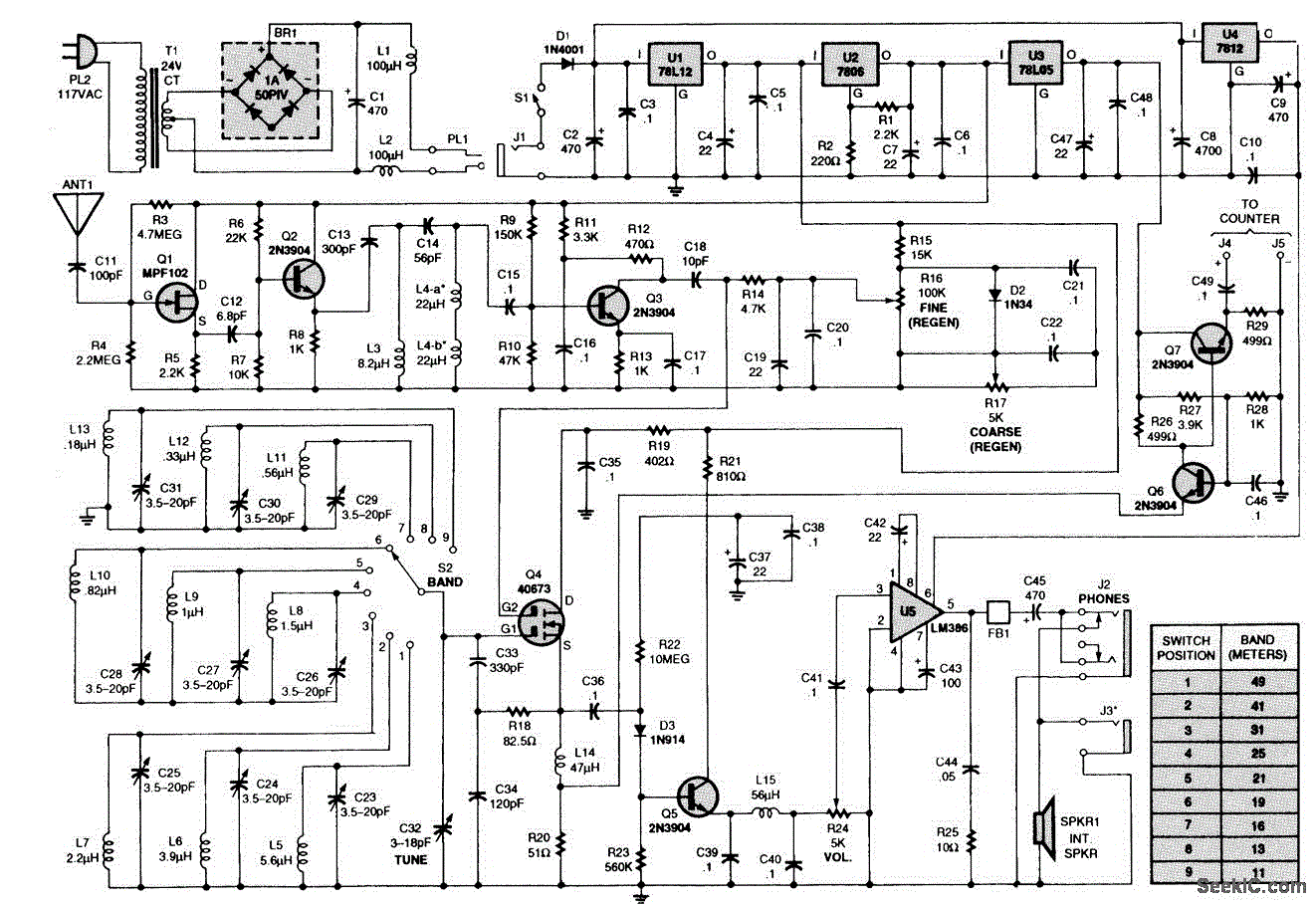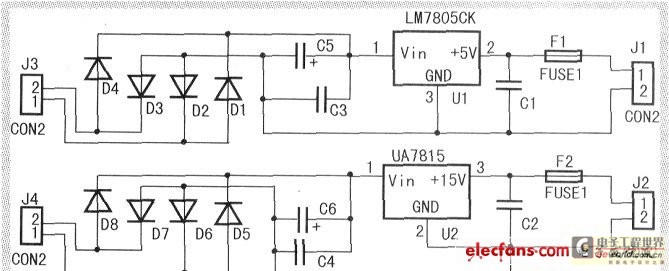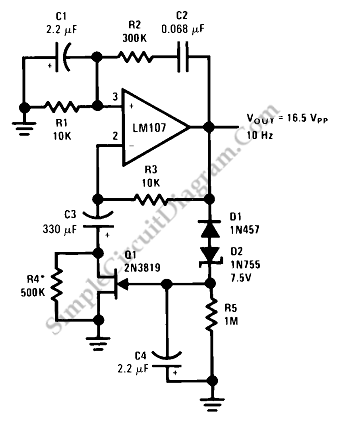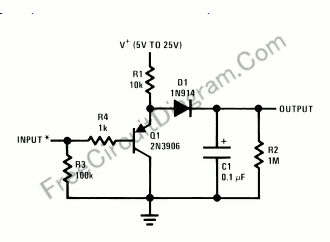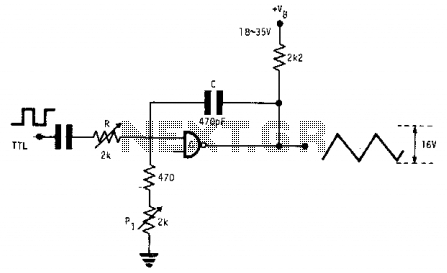
Sine-square wave oscillators
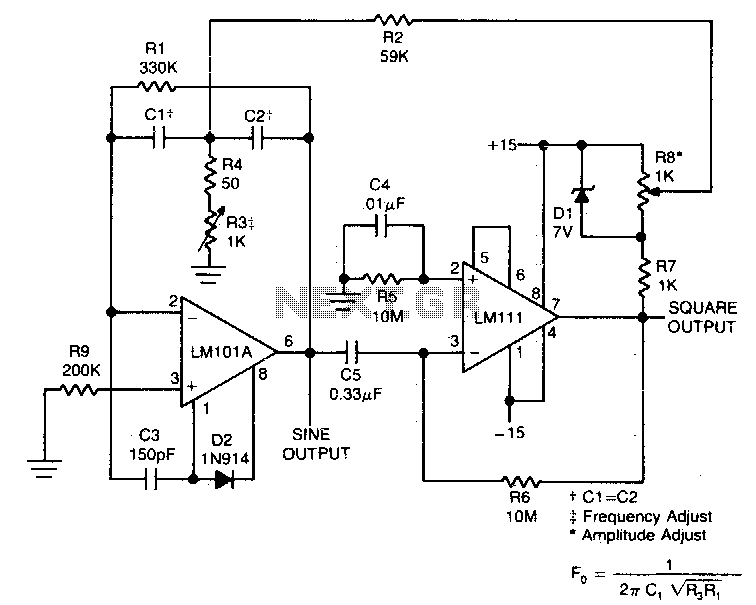
This circuit will provide both a sine and square wave output for frequencies ranging from below 20 Hz to above 20 kHz. The frequency of oscillation can be easily adjusted by changing a single resistor.
This circuit is designed to generate both sine and square waveforms across a broad frequency range, making it suitable for various applications, including signal testing, audio synthesis, and waveform generation. The core of the circuit typically utilizes an operational amplifier (op-amp) configured for oscillation, along with passive components such as resistors and capacitors that dictate the frequency response.
The sine wave output can be achieved by employing a Wien bridge oscillator configuration, which uses a combination of resistors and capacitors to create a feedback loop that stabilizes the oscillation frequency. The tuning of the frequency is accomplished by adjusting a single resistor in the feedback path, allowing for fine control over the output frequency. This design ensures that the sine wave maintains a low distortion level, suitable for high-fidelity applications.
For the square wave output, the circuit may incorporate a Schmitt trigger or a comparator to convert the smooth sine wave into a sharp, digital square wave. The transition points of the square wave can be adjusted by modifying the reference voltage levels, which can also be influenced by the same resistor used for tuning the sine wave frequency.
The frequency range of operation, from below 20 Hz to above 20 kHz, is facilitated by the selection of appropriate components, ensuring that the circuit can function effectively across this entire spectrum. This versatility makes the circuit valuable in educational settings, laboratories, and various electronic applications where different waveform outputs are required.
In summary, the circuit's ability to generate both sine and square waves, along with its simple tuning mechanism through a single resistor, contributes to its practicality and ease of use in a wide range of electronic projects.This circuit will provide both a sine and square wave output for frequencies from below 20 Hz to above 20 kHz The frequency of oscillation is easily tuned by varying a single resistor.
This circuit is designed to generate both sine and square waveforms across a broad frequency range, making it suitable for various applications, including signal testing, audio synthesis, and waveform generation. The core of the circuit typically utilizes an operational amplifier (op-amp) configured for oscillation, along with passive components such as resistors and capacitors that dictate the frequency response.
The sine wave output can be achieved by employing a Wien bridge oscillator configuration, which uses a combination of resistors and capacitors to create a feedback loop that stabilizes the oscillation frequency. The tuning of the frequency is accomplished by adjusting a single resistor in the feedback path, allowing for fine control over the output frequency. This design ensures that the sine wave maintains a low distortion level, suitable for high-fidelity applications.
For the square wave output, the circuit may incorporate a Schmitt trigger or a comparator to convert the smooth sine wave into a sharp, digital square wave. The transition points of the square wave can be adjusted by modifying the reference voltage levels, which can also be influenced by the same resistor used for tuning the sine wave frequency.
The frequency range of operation, from below 20 Hz to above 20 kHz, is facilitated by the selection of appropriate components, ensuring that the circuit can function effectively across this entire spectrum. This versatility makes the circuit valuable in educational settings, laboratories, and various electronic applications where different waveform outputs are required.
In summary, the circuit's ability to generate both sine and square waves, along with its simple tuning mechanism through a single resistor, contributes to its practicality and ease of use in a wide range of electronic projects.This circuit will provide both a sine and square wave output for frequencies from below 20 Hz to above 20 kHz The frequency of oscillation is easily tuned by varying a single resistor.

